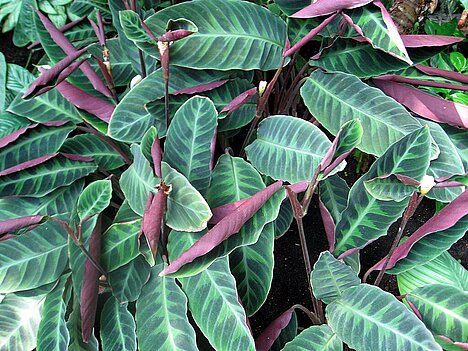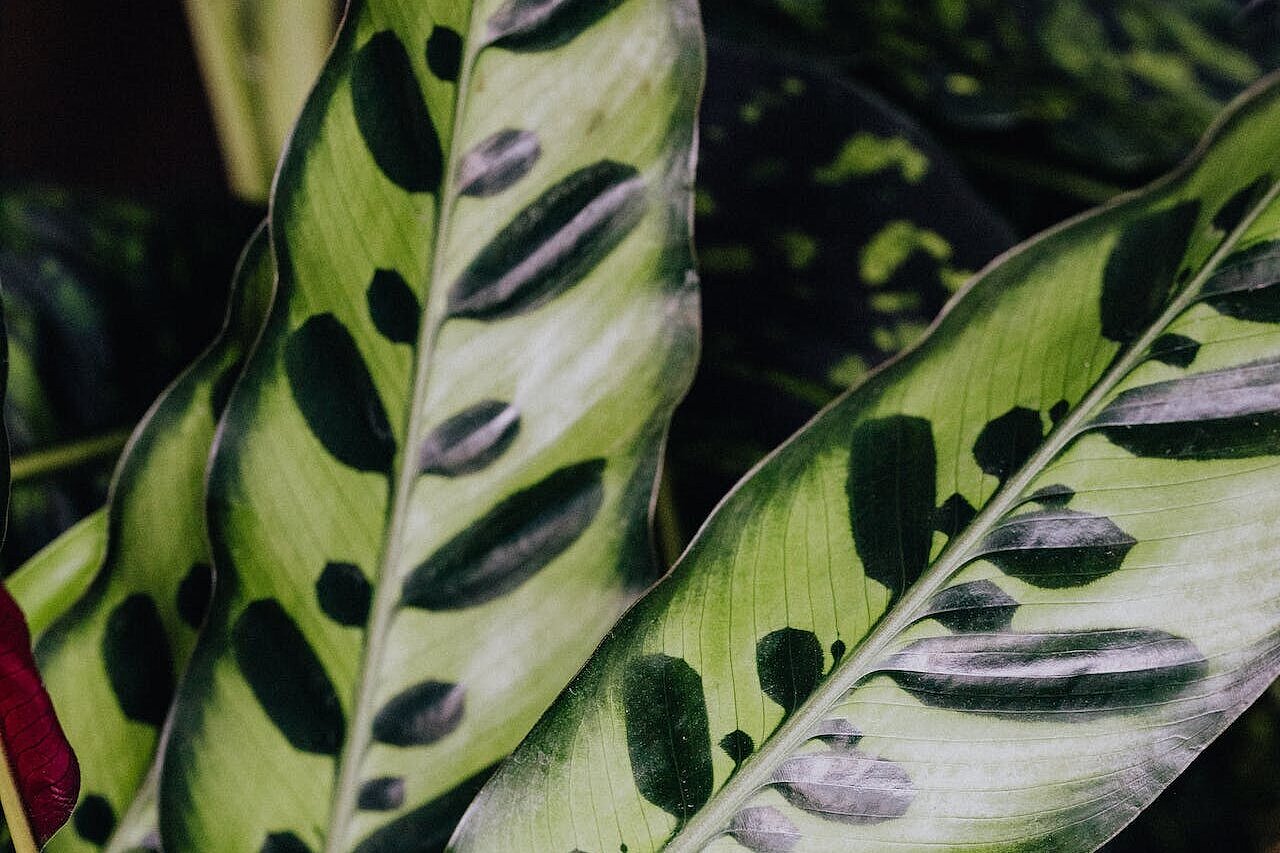Calathea warscewiczii

If you have a dog, you may be wondering if this plant could be dangerous for him. The good news is that Calathea warscewiczii does not contain any toxic substances and is therefore safe for pets. However, you should still make sure that your dog does not nibble on or damage the plant, as this can lead to mouth irritation or gastrointestinal problems. It can also cause the plant to lose its beauty.
This article will tell you everything you need to know about caring for Calathea warscewiczii so that it stays healthy and delights you with its beauty.
Location
Calathea warscewiczii likes a bright, but not too sunny spot. Direct sunlight can burn or bleach its leaves. You should therefore choose a location that provides indirect or filtered light, for example near a window with a curtain or blind. The plant can also tolerate partial shade, but too little light can cause it to lose its leaf pattern or flower less.
The ideal temperature for Calathea warscewiczii is between 18 and 24 degrees Celsius. It does not tolerate draughts or temperature fluctuations. In winter, you should make sure that the plant is not too close to a heater or gets too cold.
Watering and fertilizing
Calathea warscewiczii needs high humidity to thrive. This is because it comes from a humid climate and its leaves can dry out quickly. You can take the following measures to increase the humidity:
- Spray the plant regularly with soft water
- Place the plant on a tray with pebbles and water
- Group several plants together
- Use a humidifier
The plant should also be watered regularly, but not too much or too little. The soil should always be slightly moist, but not wet or waterlogged. Check the moisture with your finger or a moisture meter before watering. It is best to use soft water at room temperature and water the plant from below to avoid waterlogging.
Calathea warscewiczii should be fertilized every two weeks during the growing season from spring to autumn with a liquid fertilizer for green plants. In winter, you can reduce or stop fertilizing altogether.
Repotting and propagation
Calathea warscewiczii grows via short rhizomes and produces several shoots over time. If the plant becomes too large for its pot or the roots grow out of the drainage hole, you should repot it. This is best done in spring when the plant starts to grow again.
Choose a new pot made of ceramic or plastic that is only slightly larger than the old one. Use a well-drained substrate that contains peat and humus. For example, you can use a mixture of potting soil, perlite and orchid substrate. Carefully remove the plant from the old pot and remove excess soil from the roots. Place the plant in the new pot and fill it with fresh soil. Press the soil down lightly and water the plant well.
If you want to propagate your Calathea warscewiczii, you can also do this when repotting. To do this, divide the plant into several sections, each with at least one shoot and some roots. Plant the sections in separate pots with the same substrate as described above. Keep the soil moist and place the pots in a warm and bright place. The new plants should grow within a few weeks.
Pests and diseases
Calathea warscewiczii is susceptible to some pests and diseases that can affect its health and appearance. The most common problems are:
- Spider mites: these are small, red or white spiders that reside on the underside of the leaves and form fine webs. They suck the plant sap from the leaves, which can lead to yellow spots, discoloration or the leaves falling off. To combat spider mites, you should regularly spray the plant with water or treat it with an insecticide.
- Mealybugs: These are small, white insects that live in the leaf axils or on the stems and secrete a waxy substance. They also suck the plant sap from the leaves, which can lead to growth disorders, deformation or death of the plant. To control mealybugs, you should dab them with a cotton swab or treat them with an insecticide.
- Fungal infections: These are different types of fungi that can infect the plant if it is kept too wet or too cold. They manifest themselves as brown spots, mold or rot on the leaves or roots. To avoid fungal infections, you should not water or fertilize the plant too much and ensure good air circulation. To treat fungal infections, you should remove the affected parts or treat them with a fungicide.
Calathea warscewiczii is a beautiful houseplant that impresses with its velvety, green and burgundy leaves and its white, tubular flowers. It is also safe for pets as long as they do not nibble on the plant.
Caring for Calathea warscewiczii requires a certain amount of attention and care, but if you meet its needs for light, water, fertilizer and humidity, you will be rewarded with a healthy and happy plant.
Properties 2
Are you looking for other ingredients with a specific property?
Just click on them to find more.
If you notice any signs of hypersensitivity or poisoning in your dog, you should see your vet immediately. We are not a substitute for a vet, but we try to be as accurate as possible. Every dog reacts differently and we recommend you get a second opinion or consult your vet if in doubt.
Stay healthy and take good care of your four-legged friend!😊
Similar to Calathea warscewiczii
Calathea lancifolia belongs to the Marantaceae family, which is known for its diverse and decorative leaf patterns. The plant is characterized by its long, lancet-shaped leaves, which have unique...
Calathea libbyana is an evergreen, rhizome-forming perennial that thrives under the dense canopy of tropical forests. It forms egg-shaped, shiny and long-stalked leaves that are colored in various...
Calathea majestica belongs to the genus Calathea, which comprises over 300 different species of evergreen, rhizome-forming perennials. The genus belongs to the Marantaceae family and originates from...
The good news is: Calathea burle-marxii is not poisonous to dogs. The plant does not contain any harmful substances that could lead to symptoms of poisoning in dogs. However, this does not mean that...



